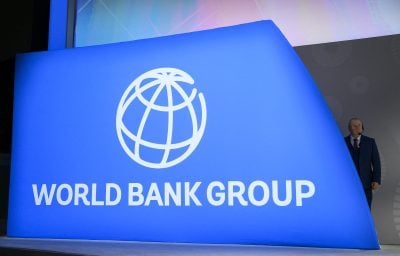Slowly but surely Africa is establishing itself as perhaps the world’s most important source of energy. More and more African countries are discovering that they have large, commercially attractive reserves of oil and gas, and this, we are told, is only skimming the surface. Africa could become the energy king of the world in a decade or less. In addition to oil and gas, the continent is expanding its profile in hydro and, more commendably, has already embarked on cleaner, greener renewable sources such as wind and solar while it is increasing investment in geothermal production.
Despite uncertainty surrounding the global economy and continued unrest in the Niger Delta, Africa could be entering its best ever period in terms of energy sector production. Mozambique and Tanzania are on the verge of becoming major gas producers, while Uganda and Ghana will soon benefit from large oil exports. The high international price of oil is also encouraging oil companies to consider a wider range of exploration areas, from Puntland to São Tomé and Principe.
At the same time, a string of new power generation projects should ensure that a greater proportion of Africans – in the cities at least – have access to electricity in their homes. Long ignored, relatively small gas fields are being tapped to supply local thermal power plants and Chinese investment in particular is enabling the completion of large hydro schemes in Ghana and in Ethiopia, where national generating capacity is expected to increase tenfold in the space of a decade, providing electricity to more Ethiopians than ever before and also generating revenues from power exports to neighbouring states.
The most important long-term development, however, could be in the slow progress of renewable energy technologies across the continent. While renewable energy is rapidly becoming a mainstay of global power production, it has often been considered as an afterthought in any analysis of the African power sector.
Yet investment plans in South Africa, Kenya and North Africa mean that renewables are now attracting a considerable slice of power generation investment. As elsewhere in the world, wind power is proving the most attractive renewable energy technology at present, while Kenya is leading the way on developing geothermal power plants.
Power of the sun
In the long term, there is little doubt that solar power will prove to be Africa’s most important form of renewables. With plentiful sunshine across most of the continent most of the time, it is a reliable form of power generation that is quickly becoming more affordable.
There are two distinct forms of solar power production that are often confused by journalists: photovoltaics (PV) and thermal solar or concentrated solar power (CSP).
PV projects employ specially treated thin cells, collected together in panels, to convert the sun’s light into electricity. Most cells are currently made of silicon but alternatives are being developed. Almost all solar power generating capacity installed anywhere around the world uses PV technology. It can take the form of half a dozen panels on the roof of a house, to vast arrays covering an entire field.
Rather than using light, CSP converts the sun’s heat into electricity via hundreds of mirrors deployed in a dish, trough or central receiver system. These mirrors concentrate sunlight to heat water or other liquid, to produce steam which is then used to drive a turbine, as in traditional thermal power plants.
Such plants could be developed on the same scale as thermal projects and so would offer the same advantages and drawbacks of all centralised, large-scale generating capacity. CSP is currently more expensive than PV but some projects are finally being developed.
UK firm Nur Energie hopes to develop a 2GW CSP plant in Tunisia in phases from 2014 until 2016. It would export most of its output to Southern Europe via a subsea transmission line. Chief executive Kevin Sara said: “TuNur is going to be the blueprint for things to come. It is a pioneering project that other governments, companies and individuals can point to and say, ‘Solar energy export from North Africa to Europe is possible, it’s worthwhile and the Desertec vision is attainable’.”
The Desertec Industrial Initiative (DII) is a plan to tap North Africa’s solar power to supply European power requirements. DII comprises a consortium of many companies including Siemens, Deutsche Bank and Audi. It aims to source 15% of Europe’s entire power requirements from North Africa by 2050 but development costs are currently put at a massive €400bn ($526bn) because of the huge transmission infrastructure that would be required to transport the electricity northwards across the Mediterranean Sea.
Sara added: “We are used to transporting exhaustible fuels like oil and gas thousands of kilometres and then burning them close to our cities with all the associated pollution problems and other risks to humans and our environment. Now, with the TuNur project, we are turning away from these polluting fuels to transmit clean and inexhaustible energy from the heart of the desert to European homes whilst, at the same time, bringing jobs, economic development, and export revenue to Tunisia.”
Want to continue reading? Subscribe today.
You've read all your free articles for this month! Subscribe now to enjoy full access to our content.
Digital Monthly
£8.00 / month
Receive full unlimited access to our articles, opinions, podcasts and more.
Digital Yearly
£70.00 / year
Our best value offer - save £26 and gain access to all of our digital content for an entire year!
 Sign in with Google
Sign in with Google 


